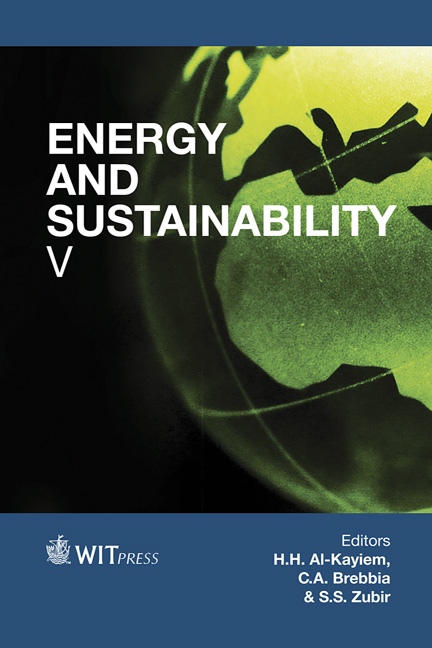Utilization Of Solar Energy Potential On Roofs: Building Extraction From The LiDAR Database In A Hungarian Sample Area
Price
Free (open access)
Transaction
Volume
186
Pages
9
Page Range
197 - 205
Published
2015
Size
1,812 kb
Paper DOI
10.2495/ESUS140171
Copyright
WIT Press
Author(s)
G. Szabó, Gy. Szabó, P. Enyedi, I. Fazekas, T. Buday, A. Kerényi, M. Paládi, N. Mecser, Sz. Szabó
Abstract
According to the Horizon 2020 climate and energy package, legislation has to meet the 20-20-20 target. That means that EU member countries have to reduce the amount of greenhouse gases by 20% to increase the proportion of renewable energy to 20% and to improve the energy efficiency by 20%. Our study is connected to renewable energy issues, the goal was to assess the extent of solar radiation exploitation potential of roofs in a typical Hungarian residential area. Our sample area (~1 km2) was in Debrecen, the second largest city in Hungary. An aerial Light Detection and Ranging (LiDAR) survey was conducted with the density of 10 points/m2. We extracted the buildings with the MicroStation TerraScan software and tested the geometry of them. The classification and vectorization of buildings were based on Terrascan semi-automatic algorithms in a Microstation environment. Primarily the roofs were important for us as these surfaces are the possible spaces for thermal and photovoltaic equipment. We determined the slope and aspect for each roof element and summarized the whole possible surface using the detected roof parts. Our research shows that the LiDAR-based survey of roof-exploitation for solar energy can be a good solution in a residential area, but we have to take into account some circumstances, e.g. the corrupted roof-geometries or numerous misinterpreted street furniture.
Keywords
solar energy potential, LiDAR, roof extraction





